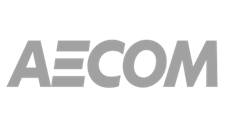Is your firm’s IT strategy positioning you for success? Today’s rapidly evolving advancements in artificial intelligence, accounting technology stacks, and remote IT architecture, as well as escalating security concerns, have created a significantly different IT environment than when most of us initially setup our firms’ IT infrastructure. Add to that, the reality that there is an increasing need for uber-secure remote work with both our personnel and our clients, and it becomes obvious that firms need to reevaluate their IT strategy to not only take advantage of the latest accounting productivity boosters, but also to minimize burgeoning cyber risks.
Legacy Reality
Having your fileserver, tax, and accounting applications “in-house” was often the fastest and most cost-effective solution to run the IT infrastructure in an accounting practice over the previous two decades. Firm owners who built their own IT infrastructure were comfortable with the gradual development and expansion of applications. This type of infrastructure provided those owners with a sense of technological understanding and control. IT solutions were somewhat generic, but once the initial capital outlay occurred, there was not much to worry about beyond updates until it was time for replacement (or if the firm suddenly expanded).
The difficulty with this “legacy system” is that on-premises networks have become increasingly sophisticated with the addition of secure remote access requirements and the astronomical growth in the number of applications that firms rely upon today. This includes not only a constant stream of updates on firm applications, but on smart devices and equipment that also require maintenance and support. This significant expansion has created more complex system environments that we are finding during our consulting engagements aren’t adequately backed up and typically require weeks or months to recover lost data in the event of a disaster.
IT Infrastructure has Flipped
In the 2016 CPAFMA Digitally Driven Firm survey, 77% of respondents hosted many of their applications within their own firm servers. By 2020, this number had dropped to 38%. In 2022, only 19% of firms hosted most programs and data in-house (consisting primarily of smaller firms). The survey found that while 9% of firms had switched to a “colocation” facility managed by their internal IT team, and 10% moved to solutions hosted by their accounting application vendor, 63% moved to external cloud hosting providers, particularly those focused on the unique needs of accounting firms.
Cloud Advantage Considerations
Why has the traditional IT infrastructure flipped? The reality today is that when accounting productivity, IT stability, remote access, and cybersecurity are considered, moving to the cloud has distinct advantages that should weigh in on the firm’s future IT strategy.
- Accounting Productivity. All new accounting application investments, and particularly those incorporating artificial intelligence are being developed in the cloud. Tax, assurance, and integrated accounting technology applications are actively being developed, released, and maintained timelier in a cloud environment, as this “tech stack” is easier and more cost effective to deliver and support than dealing with on-premises applications and our clients are accessing more applications in the cloud.
- Infrastructure Stability/Scalability. Building your own network requires adequately predicting the expected firm expansion over the life of the servers (usually five to seven years), and employing IT personnel that have the technical skills for remote access design and security, which are specific skills seldom found in internal IT teams or in local network integrators that are generalists. Most cloud providers charge on a per user cost allowing the firm to ramp up for busy seasons and reduce user counts during non-peak periods. Accounting-profession focused cloud providers also understand the importance of expanded support hours during peak times, which is beyond the capabilities of today’s typically understaffed IT departments in accounting firms managing their own IT.
- Collaboration/Remote Access. During COVID, the FBI announced that 70%-80% of ransomware breaches occurred through improper remote access configurations that many small firms had hastily implemented. In contrast, cloud providers built their infrastructure to provide a consistent (and secure) remote access platform that looked and worked the same whether you were in the office, on the road, or at home leading to more effective adoption. Having all applications and data in the cloud also allows you to collaborate consistently with clients.
- Security. Most firms managing their own IT security do not have the skills, technology, or time to adequately protect against the constantly evolving stream of cybersecurity threats. Cloud providers utilize enterprise level EDR (Endpoint Detection and Response) applications and 7/24 staffed security teams, all housed in fortified data centers with built-in internet and power redundancy, well beyond the budget of all but the largest firms. Leading cloud providers have also adopted expanded security requirements to comply with SOC2, HIPAA, and the latest CCP and GDPR privacy requirements.
The rate of technological change occurring in both applications and infrastructure is accelerating and making it harder for a firm’s IT personnel to keep up. Moving the firm’s network infrastructure and applications into an integrated cloud environment provides enterprise-class resources and capabilities for a fixed and manageable cost, akin to a utility where you only pay for what you use. This allows firm owners to focus on using these tools and their accounting skills to service and collaborate with their clients, and not on being an IT expert.
Roman H. Kepczyk, CPA.CITP, CGMA is director of Firm Technology Strategy for Rightworks and partners exclusively with accounting firms on production automation, application optimization and practice transformation. He has been consistently listed as one of INSIDE Public Accounting’s Most Recommended Consultants, Accounting Today’s Top 100 Most Influential People, and CPA Practice Advisor’s Top Thought Leaders.




















